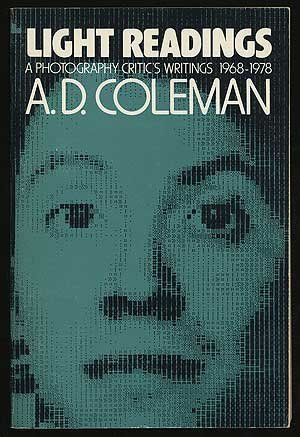 [This is the complete text of a speech delivered at New York University on December 10, 1974, in which I assessed the condition of my field 41 years ago. It was presented as part of N.Y.U.’s 4th Annual Art-Critics-in-Residence Program, which was supported in part by a grant from the National Endowment for the Arts. A few minor revisions, additions and updatings were made subsequently, but the statement stands essentially unaltered. It was published in the October 1975 issue of Camera 35, subsequently reprinted in my 1979 book Light Readings. Part 2 appears below; click here for Part 1.
[This is the complete text of a speech delivered at New York University on December 10, 1974, in which I assessed the condition of my field 41 years ago. It was presented as part of N.Y.U.’s 4th Annual Art-Critics-in-Residence Program, which was supported in part by a grant from the National Endowment for the Arts. A few minor revisions, additions and updatings were made subsequently, but the statement stands essentially unaltered. It was published in the October 1975 issue of Camera 35, subsequently reprinted in my 1979 book Light Readings. Part 2 appears below; click here for Part 1.
As a follow-up, you may enjoy my fall 2011 London lecture, “Dinosaur Bones: The End (and Ends) of Photo Criticism (Part 1)” and “Dinosaur Bones: The End (and Ends) of Photo Criticism (Part 2),” in which I assess the state of photo criticism 37 years later. Spoiler alert: It got a little better, but not for long. — A. D. C.]
•
Because It Feels So Good When I Stop:
Concerning a Continuing
Personal Encounter With Photography Criticism (cont’d.)
… Therefore, rather than attempting to predict what some of the “problems of photography criticism” may turn out to be, it seems more practical under the circumstances to address ourselves to the three interlocking hurdles which will have to be surmounted in order for a provocative critical dialogue in photography to begin.
To start with, there is the necessity for creating a network of appropriate forums for critical commentary.
Criticism, by its nature, is a public activity. Its purpose, as a process, is to establish, develop and share a set of ideas and definitions intended to enable a group of disparate people — the critics, the audience and the artists as well — to find in the work under discussion a common ground, a unifying metaphor for their mutual experiencing of the world and their understanding of that experience.
This makes it virtually impossible to become a critic in private. The public role is inherent in the activity; the position does not become official (one might also say that the circuit is not complete) until the aspirant begins to publish and thus throws his/her hat into the ring.
Consequently, the existence of adequate training grounds is a prerequisite for the evolution of a generation of full-fledged critics. There simply must be places for beginning critics to cut their eyeteeth, work out their ideas and test their attitudes regarding the medium. Most other media have well-established structures within which this maturation can take place: college and university workshops and publications in which to debut, “little magazines” in which to learn and grow, and thence to the larger critical journals or to more diversified, general-interest publications. Such systems not only permit critics to evolve and operate at their own organic pace but also — nature abhorring a vacuum — encourage people to engage in critical activity.
No such system exists in photography at present. Even though formal photography education on the undergraduate and graduate levels has multiplied dramatically over the past decade, the number of schools whose photography departments and publications pay any attention whatsoever to photography criticism as a field of inquiry is minuscule. The rarity of “little magazines” is still noteworthy, and until quite recently those few extant devoted more space to reproductions of imagery than they provided for response to same. (Presently, one can point to Aperture, Afterimage, and Exposure as outlets for critical writing; there are few others at this level.)
There exist no “larger critical journals” in photography — nothing at all approximating Artforum or even Art in America, although a few art magazines (including those two) do give periodic space to the medium. And, as noted before, no general-interest magazines and only a few newspapers devote space to writing which concerns imagery rather than hardware.
This brings us to a group of publications which I have not discussed so far because they are unique to photography and anomalous in the history of criticism. These are the large-circulation photographic monthlies — Popular Photography, Modern Photography, Camera 35 et al — and the various annual and semi-annual spinoffs therefrom. With the possible exception of writing, there is no other medium with as many amateur practitioners as photography can claim. And any comparison ends when one adds in the equipment involved in producing photographic images. Writing, painting, dance, music — none of these incorporate the acquisition of so much machinery and the consumption of so much material as does photography.
Like most hobbyists, amateur photographers get into the equipment at least as much as they involve themselves in image-making, if not more so. The primary function of the big photo magazines is to bring these hobbyists together with that technology — to marry the consumers and the products, or to be more blunt about it, to flog the goods unmercifully. Much of the writing they contain, consequently, is what we in the trade call “nuts and bolts” articles: equipment ratings, explanations of techniques, lists of tricks to assist in making something that looks meaningful, and the like.
Presumably these publications feel some slight obligation to inform their readership of developments in the medium of photography as a creative and communicative force. This presumption is based on the regular appearance within their pages of writing which considers exhibitions and book presentations of photographs. For what it’s worth, these publications have provided more consistent coverage of such material than any other.
Unfortunately, it’s not worth very much. The problem is not merely that these magazines, the major extant vehicles for photography criticism, are seriously if not entirely compromised by their absolute dependence on the billion-dollar photo-merchandising industry for ad revenue and thus for life. Intelligent, honest writing is often capable of redeeming the triviality of its vehicle. The deeper flaw is that much of what appears in those publications is at best a facsimile of criticism, written primarily by photographers who too often fail to comprehend or acknowledge the significant distinction between meaningful criticism and the exercise of one’s personal taste patterns.
One prominent writer/photographer, for example, gives over goodly portions of his book reviews to numerical counts of how many layouts fit into his categories of Good, Bad and Indifferent. He never specifies which are which, nor has he ever presented an extended statement on layout which would make interpretation of his statistics possible. When he comes to speak more specifically to images, he tends to the other extreme of over-conciseness. (“The photographs, which show wild areas near towns, are all sharp. For me, the one on page 73 is extremely beautiful.”) [Note: This was David Vestal, writing at that time for Popular Photography. — A. D. C.]
Another babbles in embarrassing veneration of his idols or, alternately, concocts snappy two-word epithets which he attaches to large lists of photographers whose work often shares no ostensible similarity, neither stylistic nor contentual. The intent of this labelling (which might be paraphrased as “Dynamic Obsolescence vs. Morbid Introspection”) would seem to be the division of the photography community into armed and antagonistic camps. He uses his categories judgmentally, to separate those artists whose sensibilities he appreciates from those he dislikes. The latter are lumped together and dismissed en masse, without their individual crimes ever being specified — a form of aesthetic Stalinism. [Note: This was Louis Stettner, writing at that time for Camera 35. — A. D. C.]
That such taste-mongering passes for photography criticism is bad enough. Most of what is published under that guise deals even less extensively with the imagery and its messages, concentrating instead on the photographer’s choices of equipment and materials, as though a photograph were a demonstration of the lens employed in its making rather than a description of its maker’s vision of the world.
This is photography criticism’s actual “tradition,” its working definition of itself. The consequences of this genre of pseudo-criticism have been little short of disastrous. It has disseminated widely a totally counterproductive definition of photography criticism; the necessary contradiction thereof drains off time and energy which could be much better spent in other ways. It has discredited the large-circulation magazines as serious critical organs, and has rendered them almost entirely useless by establishing an atmosphere of inanity and irrelevance which absorbs almost any work presented in that context. And it has grossly deluded and miseducated a large segment of the potential audience for serious photography and serious photography criticism by centering attention on equipment and technique rather than on image, idea and content.
This misdirected audience is the second of the interlocking hurdles directly ahead. Most of its members are camera owners. Although possession of two hundred dollars’ worth of toe shoes and leotards doesn’t, as we all know, make you a dancer, these people have been propagandized by the hardware industry, by the photo magazines, and by our consumerist culture into believing that their ownership of cameras makes them photographers. And, although it has long been recognized in regard to the other media that the biases and jealousies endemic to being a performer within a medium tend to vitiate any performer’s usefulness as a critic of his peers, these amateurs have been led to believe that no one outside the medium should say anything at all about photographs.
I find many indicators of this audience’s vision of my role as critic in the correspondence I receive. I can count on a regular flow of letters asking me which single-lens reflex in the $300-$350 price range I would recommend. Others want my darkroom secrets, or the address of my favorite color-processing house. One gentleman actually named me his last hope in his search for a new case for a camera two decades old. His hope was dashed, needless to say, but you can be sure that Judith Crist and Clive Barnes and Barbara Rose receive no missives along equivalent lines, for there are not equivalent lines in their media.
It is evident from such correspondence that a sizeable portion of my readership assumes me to be a practicing photographer, and one cognizant of and interested in all the latest hardware innovations. It is also evident that they feel entitled to demand that I function as a consumer guide to photographic merchandise — this despite the fact that in six years of writing I have given no indication whatsoever that this is an area of my critical concern or expertise.
That I am not a photographer is a fact which distresses another element of my readership. “Why don’t you get a photographer to review photography” (italics theirs) is a complaint often received by my editors. I find it is elicited most dependably when I disregard a photographer’s craft competence and instead discuss the mediocrity of his/her imagery. For example, in a piece of mine on Yousuf Karsh which appeared recently in Popular Photography, two simple statements — that Karsh’s work has evidenced no growth or change in several decades, and that his much-vaunted style appears to be a trap from which he is incapable of escaping even momentarily — generated a barrage of violently indignant letters. The main objections seemed to be that I was arguing with success and that, because I couldn’t produce such work myself, I had no right to comment on its inadequacies. One correspondent informed me that I was unworthy to kiss the ground on which Karsh walks; another transcribed his anger onto toilet paper.
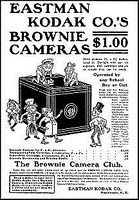 All this is comical, to be sure, and would be exclusively so if it represented what might be considered the lunatic fringe of the photography audience. Regrettably, however, it is instead emblematic of widely held beliefs and deeply cherished attitudes common to much of the audience for photography. Many people are simply not accustomed to considering photographs as anything other than craft exercises or displays of technical virtuosity; discussions of how or what a photograph communicates appear to discomfit them hugely.
All this is comical, to be sure, and would be exclusively so if it represented what might be considered the lunatic fringe of the photography audience. Regrettably, however, it is instead emblematic of widely held beliefs and deeply cherished attitudes common to much of the audience for photography. Many people are simply not accustomed to considering photographs as anything other than craft exercises or displays of technical virtuosity; discussions of how or what a photograph communicates appear to discomfit them hugely.
That such a situation exists, and has existed for so long, is attributable primarily to the lack of a functional vocabulary for the criticism of photography. The language currently applied to photographs as distinct from other kinds of images is derived entirely from the jargon of technique; it is a form of shop talk which pertains to the manufacturing of photographs as objects rather than to their workings or effects as images. In essence, it deals not with the creative/intellectual problems of the photographer as artist and communicator, but with the practical difficulties faced by the photographer as craftsman. For any consideration of the former, one must fall back on the terminologies of the other graphic arts or traditional aesthetics, which are occasionally useful in approaching certain sorts of photographic imagery but bear absolutely no relationship to others and which fail to come to grips with some of the unique and essential qualities of any photograph, such as its facticity, its temporality, and its equivocal relation to what Edward Weston called “the thing itself.”
The development of such a vocabulary is as necessary to the evolution of vital photography criticism as is the creation of vehicles for critical writing and the education/reeducation of what Minor White calls a “creative audience.” The sources for such a vocabulary will doubtless be diverse, including such disciplines as psychology, sociology, and structural linguistics. These, at any rate, are some of the areas into which I and others concerned with the absence of a vocabulary are currently nosing around for useful tools and constructs. Wherever the terminology eventually comes from, it must now be found, organized, and shared. Without a common language we all — photographic image-makers, critics, and audience alike — are doomed to remain strangers to each other, disconnected components of a generator with the capacity to enlighten us and illuminate our world.
(Part 1 I 2)
•
 Special offer: If you want me to either continue pursuing a particular subject or give you a break and (for one post) write on a topic — my choice — other than the current main story, make a donation of $50 via the PayPal widget below, indicating your preference in a note accompanying your donation. I’ll credit you as that new post’s sponsor, and link to a website of your choosing. Include a note with your snail-mail address (or email it to me separately) for a free signed copy of my 1995 book Critical Focus!
Special offer: If you want me to either continue pursuing a particular subject or give you a break and (for one post) write on a topic — my choice — other than the current main story, make a donation of $50 via the PayPal widget below, indicating your preference in a note accompanying your donation. I’ll credit you as that new post’s sponsor, and link to a website of your choosing. Include a note with your snail-mail address (or email it to me separately) for a free signed copy of my 1995 book Critical Focus!


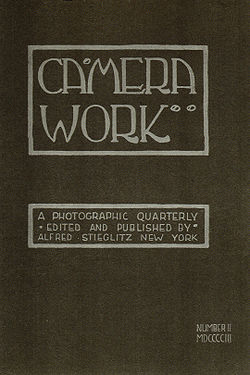
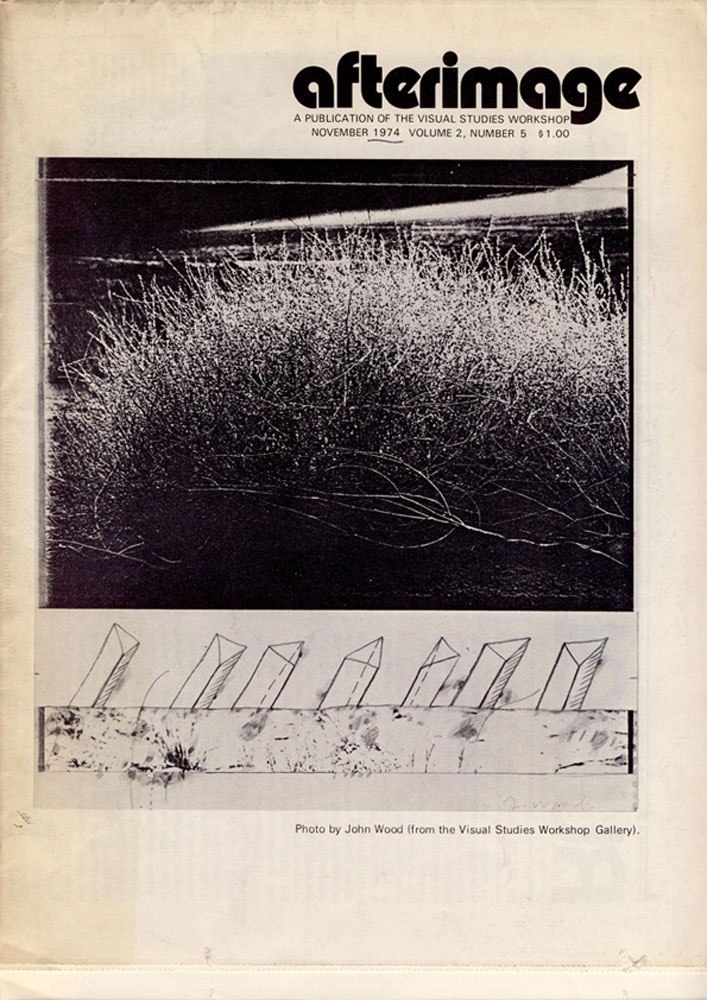
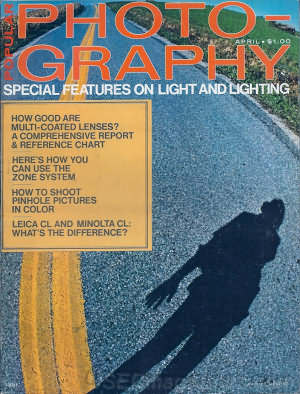
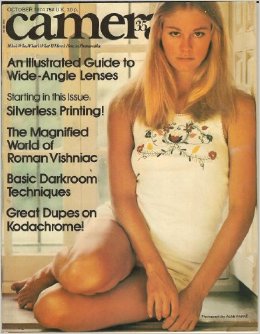
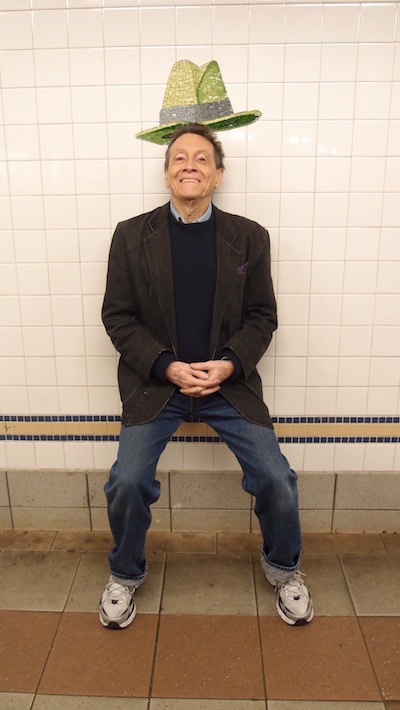
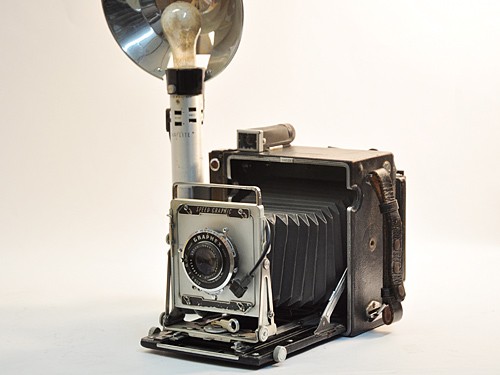




I realize this 1974 column is practically ancient history, Allan, so my comment may no longer be applicable, but I was with you up to and following, but not including the remark about Karsh, from an article I have no access to and missed previously.
I think Karsh poses an excellent example of a classical approach to the medium that incorporates aspects of the medium itself into potential reading of the imagery. This isn’t a case where it is a better resolving lens assuming significance but rather that the demands exerted by specific types of equipment and knowledge of the results, the symbiotic relationship, influences the image and potential readings and meanings as well as emotional responses.
One famous but seldom remarked example is within your extended consideration of Capa’s famous sequence – the unconventional (for the time) blurring from the exigencies of the image capture that enhances rather than detracts from the emotional potential.
The larger the format (8×10 camera or contact printing)the more significant disparities in scale can be, and that disparity (visible in high quality prints or reproductions) can tax the eye the way that expressive musical counterpoint can tax sonic/musical intelligence. It is a part of the aesthetic and a component in the aesthetic response even if it is not always consciously noticed.
Karsh might be considered a cross-over photographer making work for hire as well as demonstrably exercising great care, as an artist and well-educated individual (many artists are even though they sometimes prefer to adopt an “aw shucks” rather than scholarly attitude)to represent individuals in ways that cumulatively add up to inspired insight into the subject’s own creative work. Compare the openness of his rendering of Robert Frost (I would call it avuncular in the open tones, but with a distinct edge in his expression) to a considerably darker vision that seems appropriate to the more obviously reticent work of François Mauriac.
Was there “no growth or change” in Karsh’s work? His range can sometimes be vast. To better see whether there is or isn’t growth or change there first needs to be a chronological presentation, second, a sorting out of the non-famous high paying clientele from those who created work he might have highly valued, third but not finally, extended consideration of style (involving use of light) that, compared to other portraitists, might be called introspective rather than extroverted, or perhaps in the case of Man Ray, experimental. Not to say that all this is as easy as saying it.
There are in fact many aspects to a potential for a critical approach (or approaches)to photography- your “directorial mode” is one – that are seldom applied or, given photographic careers that are often considerably shorter than for artists in other media, are overly simplified from deduction from relatively small albeit often intense bodies of work, or work from single “schools” of photography.
One factor that seems paramount to me is the importance of a sustained examination of specific works. The “New Criticism” with critics like F.R. Leavis, Eric Auerbach and Frank Kermode applied this approach to illuminate works of literature to provide new insights into the art. Such analysis and following dialog (a frequently controversial issue in itself for independent – i.e. unpaid responses), I think, render moot the question of whether there is or isn’t meaningful criticism of photography, if raising the question isn’t already ancient history.
I’d have go digging in the files to extract the Karsh review that I paraphrased in that passage. It was certainly a short review, 3-4 paragraphs at most, published in their “Shows We’ve Seen” column. My recollection, at this distance, has me saying that he mostly gave us sumptuous iconic renderings of the familiar public personae of his subjects, with no sense of glimpsing their inner life.
Surely there’s a larger discussion to be had about Karsh half a century later. Starting, perhaps, with the notion that a photographic portrait can address something more than the surfaces off which its light reflects, a whole big argument in itself. I didn’t write that passage in 1974 talk to suggest that I had the last word on Karsh, but rather to indicate the vituperation with which anything other that adoration of the pantheon got met by the readership of Popular Photography back then.
Raised as I was on the close textual analysis of the “New Criticism,” in my college years as an English Lit major, I strove to bring some of that quality of attention to the work itself, without scanting the information and insight that a more contextual approach can provide. In fact, I tend still to move between the two, depending on the situation — meaning that if most of my colleagues have devoted themselves to contextual commentary on a given work or body of work I’ll do the contrary, and take a textual approach, or at least incorporate that into my own discussion.
I find little of that kind of scrutiny in the present-day writing about photography. My colleagues tend to wallow in the contextual. Often entertaining, sometimes cogent, now and then even useful. But not the same as concentrating on the thing the photographer made, and what it has to say for itself.
A.D…you hit the nail on the head when you wrote ‘why don’t you get a photog to be the photog critic.’
I go over the why of this phenomena that seems to baffle you in this post.
https://danielteolijr.wordpress.com/2015/05/10/opinions-are-like-assholes-everyones-got-one/
Photogs are always looking at life to document and they learn from one another by seeing their photos. In photog circles the first thing the photog being criticized does is to look at the critics photos to see what THEY produce. It is just how things go and have been with photogs. They don’t respect critics that can’t produce good photos. When you go for an art job interview or try to place your work with a gallery…what is the first thing they want…your portfolio.
There is nothing easier to do than to spout off why a photo is shit. If the photog listened to all the critics they would not get anywhere. As I said in my last reply, decisions have to be made in a fraction of a second if your a street photog, no time for excess bullshit floating around in our heads from the critics.
In any case you seem to have survived a long career breaking that mold (photo critic who is not a photog)…so keep on writing. Just be careful you don’t come down with a case of Sontagitis!
You seem to have missed the point completely. The fact that some photographers “don’t respect critics that can’t produce good photos” simply makes it clear that they don’t read criticism in general. While there have been a few respected painters who also write art criticism (i.e., Peter Plagens, Brian O’Doherty), a few musicians who write music criticism, etc., the great critics have rarely been notable performers (or even lesser performers) in the mediums they have addressed.
While there are certainly benefits to a critic’s having an understanding of the tools, materials, and processes of a given medium, even hands-on experience, and even professional-level skills therein, there are also drawbacks. As I wrote in this essay, “[A]lthough it has long been recognized in regard to the other media that the biases and jealousies endemic to being a performer within a medium tend to vitiate any performer’s usefulness as a critic of his peers, these amateurs have been led to believe that no one outside the medium should say anything at all about photographs.”
It’s inconceivable that any musician would say “Why don’t you get a musician (or a composer) to review music?” Or a choreographer say “Why don’t you get a choreographer (or a dancer) to review dance?” Or a filmmaker say “Why don’t you get a filmmaker (or a cinematographer, or a screenwriter, or an actor) to review film?” Because the audiences for those mediums — including the practitioners — understand the value of perspectives that come from the audience’s side of the dialogue.
I don’t think it would occur to anyone interested in film, or dance, or music to expect or require critics thereof to produce anything in those forms. So when you write, “In photog circles the first thing the photog being criticized does is to look at the critics photos to see what THEY produce. It is just how things go and have been with photogs,” you merely describe not only the regrettable insularity of a number of photographers, and their lamentable unfamiliarity with the critical and historical discourse in their own medium, but also their unawareness of the public dialogues about other media as well, where commentary from non-performers is the norm.
The fact that this “is just how things go and have been with photogs” does not mean that’s how it must remain. Indeed, it means only that this is how things go with the photographers you know and hang out with. Quite a few of the photographers I know personally have read deeply in the history and criticism of the medium (I’d cite Ken Schles as just one example), and have found that immersion enriches their work. So beware of attributing your own lack of interest in all that to others.